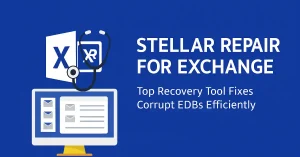Your business phone bills are probably eating up more of your budget than they should. Between roaming charges, physical SIM card management, and device switching headaches, traditional mobile connectivity creates unnecessary friction. Meanwhile, your competition might already be moving toward a smarter solution that’s reshaping how companies handle mobile communications.
eSIM technology adoption is accelerating faster than most business owners realize. By 2030, estimates suggest that 76% of all smartphone connections,equivalent to 6.7 billion devices,will be made through eSIMs.This isn’t just another tech trend,it’s becoming the standard way businesses connect their teams and devices.
Understanding the eSIM Revolution
The shift from physical SIM cards to embedded technology represents more than just convenience. It’s fundamentally changing how businesses think about connectivity and device management.
How eSIM Works in Simple Terms
An eSIM is essentially a digital SIM card that’s built directly into your device. Instead of inserting a physical plastic card, you activate service through software. The technology stores your carrier information electronically, allowing you to switch networks or add new lines without handling tiny pieces of plastic.
When you’re ready to get started, you can buy esim online from various providers and activate it instantly through a QR code or app. This process eliminates the waiting period and logistics nightmares that come with traditional SIM cards.
The Technical Foundation
The embedded SIM chip connects to carrier networks the same way physical SIMs do, but with added flexibility. It can store multiple carrier profiles simultaneously, letting you switch between providers without changing hardware. The security features actually exceed those of traditional SIM cards because the embedded chip can’t be physically removed or tampered with.
This digital approach creates opportunities for remote management and instant provisioning that weren’t possible before. Your IT team can activate new lines for employees anywhere in the world without shipping physical cards or coordinating office visits.
Benefits of eSIM for Businesses That Matter
Modern businesses need connectivity solutions that actually solve problems rather than create new ones. eSIM technology delivers practical advantages that directly impact your bottom line.
Cost Reduction and Budget Control
Travel expenses can spiral quickly when employees face international roaming charges. eSIMs allow workers to connect to local networks abroad without paying premium rates. You’ll see immediate savings on monthly bills and avoid surprise charges that come with traditional roaming.
The ability to manage multiple carrier profiles means you can choose the most cost-effective option for each situation. Your accounting team will appreciate predictable billing and reduced administrative overhead.
Streamlined Device Management
Managing a fleet of business devices becomes much simpler when you don’t need to handle physical SIM cards. New employee onboarding can happen remotely,no waiting for cards to arrive or scheduling office visits for activation.When someone leaves the company, you can deactivate their service remotely without retrieving hardware. This eliminates security risks and simplifies the offboarding process significantly.
Enhanced Security Features
Lost or stolen devices create less risk because eSIMs can’t be removed and used in other devices. You can remotely disable service immediately, preventing unauthorized usage. The embedded nature of the technology provides better protection against SIM swapping attacks that target traditional cards.
International eSIM Advantages for Global Operations
Companies with international operations face unique connectivity challenges that eSIM technology addresses directly.
Seamless Global Connectivity
Your traveling employees can switch to local networks automatically, avoiding expensive roaming fees while maintaining reliable service. This flexibility is particularly valuable for sales teams, consultants, and executives who frequently travel between countries.
The ability to maintain multiple carrier profiles means workers can keep their primary business number active while using local data plans. This dual-capability eliminates the need to carry multiple devices or swap SIM cards constantly.
Simplified International Expansion
Opening new offices or sending teams to different countries becomes easier when you don’t need to establish relationships with local carriers immediately. eSIM technology lets you provide connectivity quickly while you evaluate long-term options.
The reduced logistics complexity means faster deployment and lower setup costs for international operations. Your teams can hit the ground running instead of waiting for local SIM cards and carrier approvals.
eSIM vs Traditional SIM Cards: The Business Comparison
Understanding the practical differences helps clarify why businesses are making the switch.
| Feature | Traditional SIM Cards | eSIM Technology |
| Activation Time | 24-48 hours | Instant |
| Physical Management | Required | None |
| Multiple Carriers | Need multiple cards | One device, multiple profiles |
| Remote Provisioning | Not possible | Full remote management |
| Security Risk | Can be removed/stolen | Embedded, tamper-proof |
| Travel Flexibility | Limited | Automatic network switching |
Operational Efficiency Gains
The administrative burden of managing physical SIM cards disappears with eSIM adoption. Your IT team can focus on strategic initiatives instead of logistics coordination. Employee productivity increases when they’re not dealing with connectivity issues during travel or device switches.
Future-Proofing Your Technology Stack
Most new devices already support eSIM technology, and many are moving toward eSIM-only designs. Early adoption positions your business ahead of the curve rather than scrambling to catch up later.
Implementation Strategies That Work
Successfully adopting eSIM technology requires thoughtful planning and execution.
Pilot Program Approach
Start with a small group of frequent travelers or remote workers to test the technology. This allows you to work out any integration issues before rolling out company-wide. Gather feedback and refine your processes based on real-world usage.
Carrier Selection and Management
Choose providers that offer robust business support and management tools. Look for features like centralized billing, usage monitoring, and automated provisioning capabilities. Don’t just focus on price,consider the total cost of ownership including management overhead.
Employee Training and Support
While eSIM technology is generally user-friendly, providing clear instructions and support resources prevents confusion. Create simple guides for common tasks like activating international profiles or switching between carriers.
Common Questions About eSIM Technology
Is there a benefit of having an eSIM?
eSIM is more secure than a physical SIM because it can’t be removed if your device is lost or stolen. You don’t need to obtain, carry and swap physical SIM cards, which can also be lost.
How do you think eSIM technology will evolve in the coming years?
The future of eSIM isn’t limited to smartphones. By 2025, expect widespread adoption across devices like laptops, tablets, smartwatches, and even IoT gadgets. This expansion will streamline connectivity under single networks.
What challenges might businesses face when switching to eSIM?
Initial setup requires coordination with carriers and employee training. Some older devices may not support eSIM technology, requiring hardware upgrades. However, these short-term challenges are outweighed by long-term benefits.





